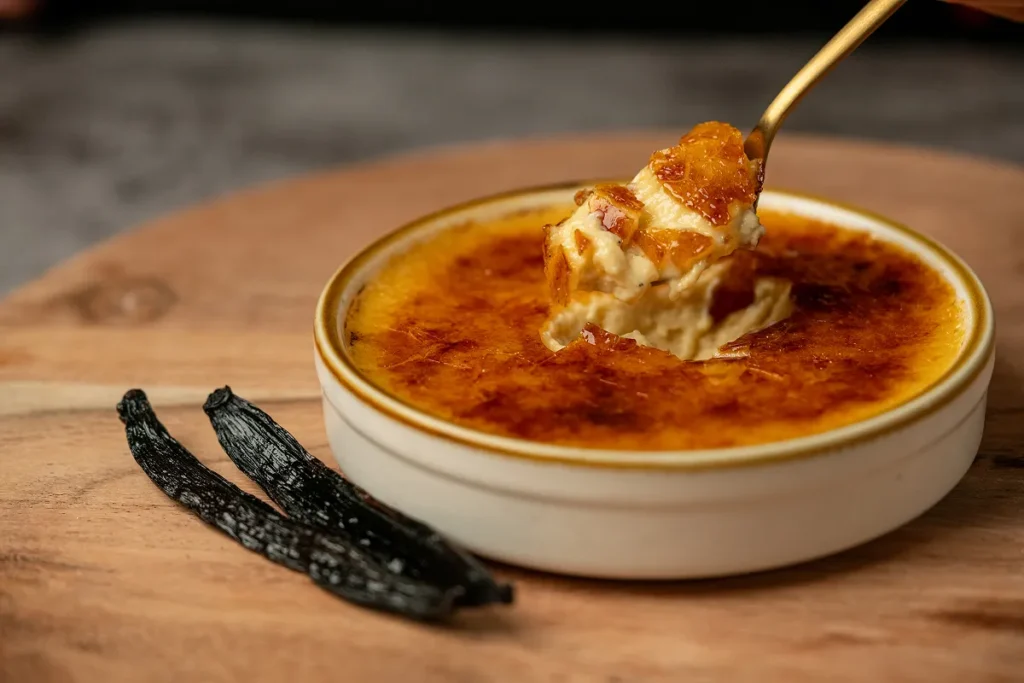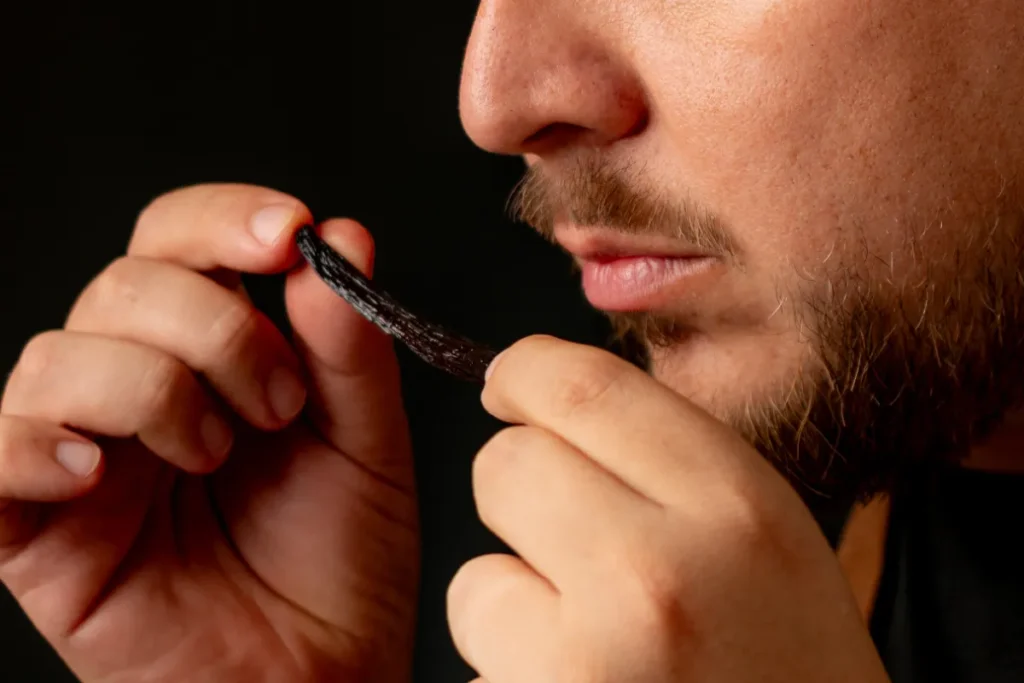Vanilla Maya delivers a balanced yet richly expressive flavour, built on a high vanillin content (2.13%) comparable to the finest Vanilla Planifolia and even surpasses that of top-tier Vanilla Tahitensis.
Additionally, it contains Anisyl compounds which contribute with its floral and spicy notes typical of Vanilla Pampona.
Vanilla Cribbiana, known as Vanilla Maya, is a rare species of vanilla native to Guatemala and southern Mexico. Its complex aromatic signature and distinctive flavour profile are ideal for chefs who demand purity, depth, and character from their ingredients.
Chemical composition table.

A graceful note reminiscent of wild orchid and jasmine, delicate yet present, perfect for enhancing custards, mousses, and crème anglaise.
A deep, dried fruit sweetness underpinned by soft cacao bitterness. These earthy undertones make Vanilla Maya ideal for chocolate pairings, spiced compotes, and ganache.
Elevated concentrations of p-hydroxybenzaldehyde and anisic acid bring gentle notes of nut, clove, and anise. The result is a vanilla with structure, not just sweetness.
With 13.96% lipids and over 50% insoluble fibre, the pods are thick, oily, and rich in extractable flavour. They integrate seamlessly into pastry bases and emulsions, yielding both body and aroma.
Subtle balsamic notes with hints of caramelised sugar and honeyed wood. These warm, resinous tones bring a golden, almost smoky sweetness to glazes, tarts, and butter-based sauces.
A fresh, leafy undertone that hints at the orchid’s forest origins. This subtle freshness adds complexity to layered desserts and balances heavier bases like chocolate or dairy.
Our Vanilla Maya presents a unique blend of aromatic compounds. The GC-MS analysis identified 70 aromatic compounds across seven chemical families: acids, alcohols, aldehydes, esters, furans, hydrocarbons, and ketones. Exceeding the average profile of other commercial species.
The aromatic profile of our vanilla is influenced by the species, production location, curing process, and storage conditions. In Calicova Vanilla Maya, compounds with diverse aromatic attributes were identified, including descriptors such as vanilla, woody, balsamic, anise, sweet, herbal, fruity, floral, smoky, phenolic, and wine-like, among others. These descriptors were reported using GC-MS and sensory evaluations of V. Planifolia and V. Tahitensis pods.
Compounds identified with GC-MS

(Vanillin, vanillic acid, dehydrozingerone) Classic, balsamic, and creamy. The recognisable heart of delicate vanilla, but with added depth.
(Anisic acid, anisyl alcohol) Rarely found outside of V. Tahitensis and V. Pompona, these impart anise-like, floral, and sweet spice notes. Their presence in Vanilla Maya adds a distinctive aromatic note.
(Borneol, methyl cinnamate, methyl p-anisate) Provide notes of pine, citrus peel, and spice, bringing freshness particularly in cold or lightly cooked applications.
(Benzoic acid, methyl p-anisate) Adds a subtle balsamic and wine-like nuance, with slight herbal notes. It’s especially noticeable in long infusions and aged extracts.
(Benzyl alcohol, phydroxybenzyl alcohol, benzyl acetate) These contribute soft fruit and pear-like notes, ideal for fruit-forward patisserie and refined glazes.
(Guaiacol, p-cresol, creosol) Adds smoky, resinous undertones. Carefully balanced during curing, these deepen the aromatic experience without overpowering.